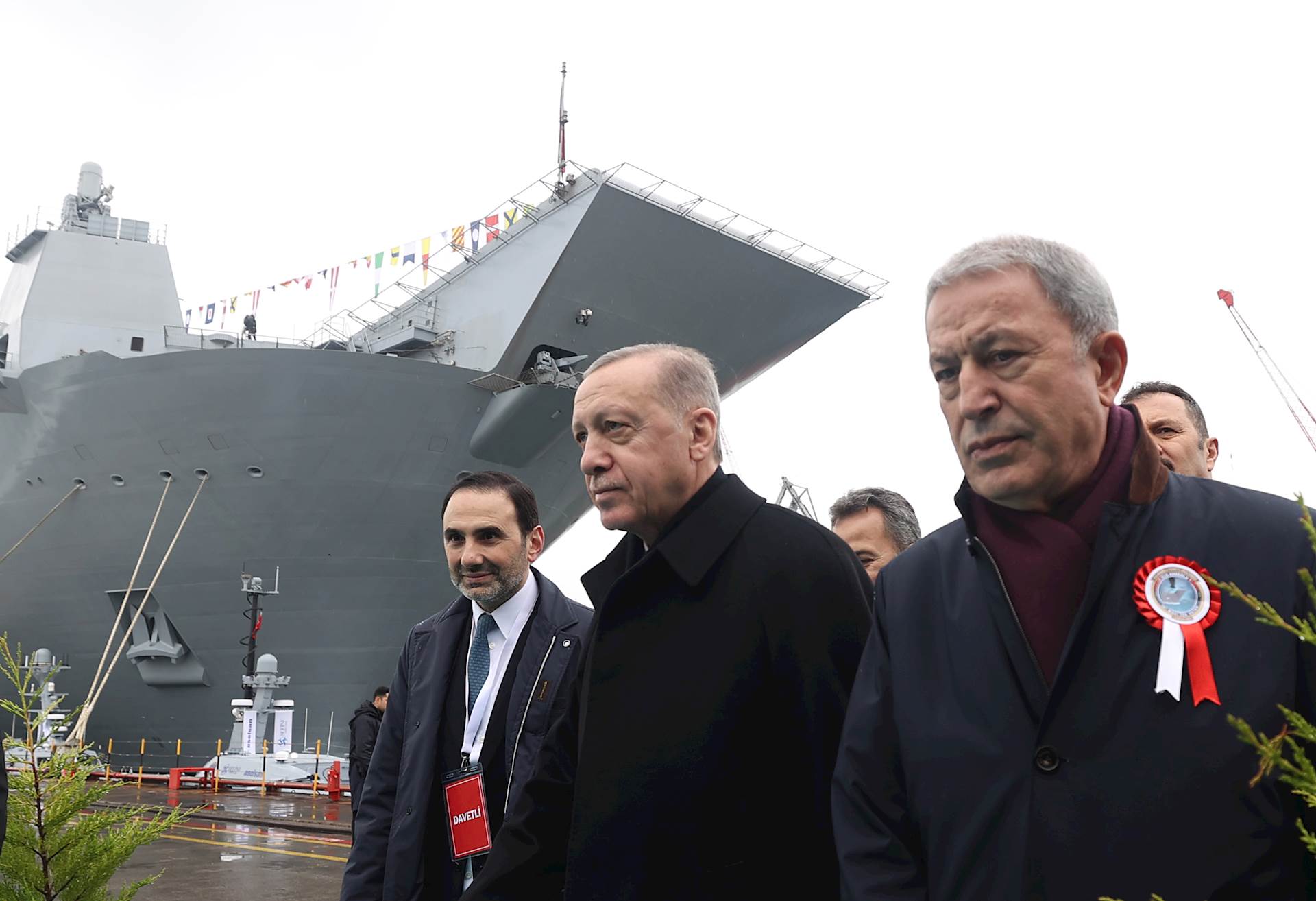
Turkey has recently unveiled its latest amphibious assault ship, the TCG Anadolu, which is equipped to carry light aircraft, military drones, and combat helicopters. The ship’s construction began in 2016, and its launch marks a milestone in Turkey’s defence industry development.
Turkish President Recep Erdoğan has highlighted that domestic and national industries have developed the ship’s weapons, electronic warfare, infrared search and tracking, electro-optical search, laser warning, and torpedo defence systems and radars. Turkey’s efforts to build its defence technology are a crucial part of its strategy to reduce its reliance on foreign suppliers.
The TCG Anadolu’s ability to carry military drones and helicopters make it a valuable asset in defence and humanitarian operations. Its capacity to deploy troops and equipment directly onto a beach means it can support ground operations in various scenarios, from counter-terrorism to disaster relief.
Upholding security in the Black Sea
The ship’s unveiling comes at a time when Turkey has been actively trying to act as a mediator between Kyiv and Moscow in the ongoing war between Ukraine and Russia. Turkey’s geographical location, bordering both Europe and the Middle East, and its strategic importance as a NATO member, has positioned it as a critical player in regional security.
Madeline Wild, aerospace, defence, and security analyst at GlobalData, claimed: “The TCG Anadolu will provide Turkey with a renewed naval strength, both in terms of strategic capabilities and in the export, and industrial, opportunities the platform provides.
“As the Ukraine war continues, upholding the security of the Black Sea is of sustained importance for Turkey and its NATO allies – the new vessel will support this mission.”
Defence exports as a financial strain alleviation
Turkey’s defence industry has significantly developed in recent years, with the country investing heavily in research and development to improve its military capabilities.
Despite Turkey pursuing the bolstering of its defence industry, inflation has spiralled out of control in Turkey. With the lira showing considerable weakness as Turkey reported a 73.5% rise in inflation in June 2022, GlobalData says in EMEA: Turkey: Inflationary spiral gathers momentum.
With geopolitical tensions across Europe at unforeseen, generational levels, Turkey has made strengthening its indigenous industrial base a critical strategic priority. Turkey’s 2019–23 Strategic Plan outlines a plan to produce 75% of goods domestically by 2023.
Wild continued: “By creating platforms attractive to foreign buyers through developing a strong independent industrial base that welcomes external investment, Turkey will benefit from large financial rewards.”
The unveiling of the TCG Anadolu is a sign of growth in its ambitions in the defence sector. However, Turkish President Erdoğan must find the right balance between inflation, mounting national debt, and promises of progress in industries such as.
President Erdoğan said: “We are particularly pleased that our defence industry products, which are successfully used by our security forces in their domestic and international operations, have started to take their place in the inventories of friendly countries.”
Amphibious assault ships attracted potential buyers worldwide
According to a recent market research report from GlobalData, “The Global Naval Vessel and Surface Combatants market 2023-2033″ is expected to reach $ 65.8bn by 2033, with indigenous warship design and construction initiatives driving the market growth.
Navantia, a Spanish shipbuilder, built the TCG Anadolu. In August 2022, Egypt contacted Navatia to acquire amphibious assault ships.
Other countries worldwide have also pursued upgrading or acquiring amphibious assault ships. China’s first amphibious assault ship Hainan, completed its full-time training assessment late last year, whilst South Korea upgraded its amphibious assault ship, the ROKS Dokdo, in the same period of 2022.
The TCG Anadolu represents an achievement for Turkey’s defence industry. Its ability to carry military drones, combat helicopters and other equipment, combined with its amphibious capabilities, makes it a valuable asset for military and humanitarian operations.



